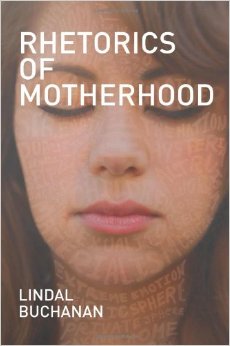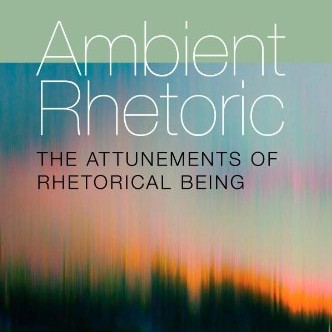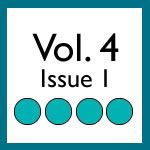Book Review: Buchanan’s Rhetorics of Motherhood
 Lindal Buchanan’s Rhetorics of Motherhood offers a re-situating of rhetorical disciplinary terrain by examining the often-unexplored American cultural construction of motherhood and its deployment as a rhetorical strategy. The book highlights the rhetorical complexities of motherhood, providing case studies of women leveraging their maternal persona for activist objectives as well as using maternal discourse for legislative aims. At the center of each case study is the argument that cultural codes of motherhood inform the everyday practices of women as well as influence the success of deploying motherhood as a rhetorical strategy. For Buchanan the deployment of motherhood functions as a “Janus-like capacity to generate compelling persuasive means while buttressing restrictive gender roles” (6) in which rhetorics of motherhood provide authority and credibility to women while always/already dangerously positioning women within gendered constructs.
Lindal Buchanan’s Rhetorics of Motherhood offers a re-situating of rhetorical disciplinary terrain by examining the often-unexplored American cultural construction of motherhood and its deployment as a rhetorical strategy. The book highlights the rhetorical complexities of motherhood, providing case studies of women leveraging their maternal persona for activist objectives as well as using maternal discourse for legislative aims. At the center of each case study is the argument that cultural codes of motherhood inform the everyday practices of women as well as influence the success of deploying motherhood as a rhetorical strategy. For Buchanan the deployment of motherhood functions as a “Janus-like capacity to generate compelling persuasive means while buttressing restrictive gender roles” (6) in which rhetorics of motherhood provide authority and credibility to women while always/already dangerously positioning women within gendered constructs.
Rhetorics of Motherhood unveils this discursive construction of motherhood within three distinct historical and American contexts to theorize motherhood as a rhetorical strategy that both disadvantages and advantages women. While the case studies of Margaret Sanger and Diane Nash might appeal to feminist historiographers of rhetoric, the book extends itself into issues of the present day. Buchanan outlines a rhetorical analysis of pregnancy and personhood in “Laci and Conner’s Law,” which details congressional deliberation of a 2003 bill to establish fetal personhood as federal law, and, as such, she appeals to rhetorical feminists, rhetoricians of public policy, and cultural-techno rhetoricians; however, while these three case studies showcase multiple ways in which motherhood historically and presently impacts the politics and practices of women, Rhetorics of Motherhood’s scope of motherhood is limited. The book’s limitation, however, supports Royster and Kirsch’s imperative for expanding rhetorical sites of research by taking up new rhetorical scenes, such as that of motherhood.
Nevertheless, the book comes at a particularly important time in which access to women’s reproductive health currently is being debated by congressional authorities, like the recent Supreme Court Hobby Lobby rulings. Inadvertently responding to this, Rhetorics of Motherhood lays the groundwork for a theoretically rich conversation pertaining to the recent political climate. Such a climate has begun to privilege rights of the fetus over the mother, resulting in a cultural assumption of pregnancy as two independent persons. These assumptions impact the rhetorical imagery of motherhood. A maternal discourse that labels the pregnant body as two independent bodies is often taken up by pro-life legislation efforts. Frequently, the image of the pregnant female serves as the ultimate rhetorical image of motherhood—one inherently attached to the child. Understanding that motherhood is always/already being deployed for rhetorical purposes is Buchanan’s essential argument and creates an exigency for examining the relationship between motherhood and womanhood in a child-centric political era.
To clarify this American cultural “code of motherhood,” Chapter 1 begins to build a theoretical frame with an analysis of Sarah Palin’s deployment of motherhood in the 2008 presidential campaign. During Palin’s campaign, motherhood functioned as a topos, persuading the audience at her Republican National Convention (RNC) appearance that she was an approachable and family-centric leader akin to a “hockey mom with lipstick” and constructed an emotional image of herself as a special-needs mother displaying Down syndrome baby for the RNC audience. Buchanan explains that the audience’s reading of Palin as mother is due to Barthes’s concept of connotation and denotation, which evokes this cultural code of motherhood. While the packaging of Palin as mother won over many RNC supporters, critics refuted the positivity of this image. Non-Palin supporters called into question her motherly qualities as a severe detriment to her leadership and candidacy. This tension-filled image of Palin as mother supports Buchanan’s claim about the rhetorical limitations of motherhood and thus exemplifies the complexity of deploying maternal rhetorics in which “their force and peril derive from entrenchment within dominant systems of gender, knowledge, and power” (5).
Specifically, Barthes’s theory of connotation and denotation allows Buchanan to build her argument about the persuasive and restrictive use of motherhood. Buchanan also draws upon Foucault to help readers understand how motherhood functions as a smaller version of the entire system of gender—always contextually bound and varied across locations, communities, and time. As a discursive entity, the code of motherhood persuades, particularly within public discourse (Susan Miller), and, as a result, motherhood, according to Judith Warner, has evolved into an American veneration of Good and Evil. By associating motherhood with Good and Evil, Buchanan turns to Richard Weaver’s notion of god terms (which are attractive, encapsulate ideals, and are suggested that society pursue) and devil terms (which are repulsive, merit reproach, and are suggested that society avoid). Buchanan asserts that Mother and Woman correspond to these terms in which “the devil-term Woman and god-term Mother are rhetorical expressions of the code of motherhood and overarching system of gender” (8). The Woman/Mother continuum provides a framework for Buchanan to then analyze motherhood in public discourse and articulate the nuances for when the deployment of the code either advances or undermines women.
The second half of Chapter 1 aims to address the intersectionality of motherhood examining dominant systems of gender that frequently disregard marginalized women. Lack of intersectionality poses a real issue for motherhood as a code “that disregard[s] intersectional differences, create[s] institutional impediments for nontraditional women, and produce[s] serious rhetorical consequences” (21). While Buchanan’s attention to the lack of intersectionality of motherhood is important, readers might question Buchanan’s use of intersectionality. First, in Rhetorics of Motherhood different case studies could have been selected to better represent the intersectionality of motherhood she advocates. Second, intersectionality could have been better represented if Buchanan had not limited her examination of the code of motherhood to solely American/Western public discourse; nonetheless, Buchanan’s articulation of the code of motherhood sets up the following three chapters (Chapter 2-4) as case studies that investigate the tension and complexity of deploying rhetorical motherhood in public discourse.
Theorizing the “code of motherhood” allows Buchanan to move into three distinct and historically separate case studies of mothers and maternal discourse. Chapter 2 begins as a focused analysis of Margaret Sanger, an early twentieth-century American mother and birth control activist. Working as a maternity nurse in New York City, Sanger witnessed the extreme poverty and desperate conditions women endured while giving birth as well as the bleak future of raising multiple children in such deplorable conditions. Buchanan explains how Sanger appropriated motherhood to repair anti-birth control sentiment. Sanger’s subjectivity as mother and the ethos of her persona developed a strong following and support from other mothers who challenged the dominant discourse around birth control. Sanger’s identity as a mother was a rhetorical choice that served as an irrevocable advantage to advancing birth control rights. Critics, however, have accused Sanger of limiting her cause to solely advancing the reproductive rights of white women. Buchanan acknowledges this critique in Chapter 2 but counters by noting the historical context as an inherent constraint on Sanger, which should not disregard the advantages her reproductive rights initiative introduced. In Rhetorics of Motherhood, Sanger functions as a subject whose maternal discourse and ethos well served her activist objectives to disrupt public sentiment of birth control.
While Buchanan uses Sanger as an exemplary model of rhetorical motherhood, the case study of Diane Nash in Chapter 3 highlights the dangers and limitations in rhetorically attaching maternal discourse to an activist agenda. As a leader of the Student Nonviolent Coordinating Committee (SNCC) protesting southern segregation in the 1960s, Nash employed multiple maternal appeals while pregnant during her two-year prison term. Rhetorics of Motherhood highlights motherhood’s paradox in Nash’s story. Specifically, Buchanan surfaces tensions in how Nash’s maternal appeals prompted media attention to antisegregation demonstrations. While media appeals were welcomed by the activist movement, Buchanan points out that most of the coverage on Nash focused on her as a pregnant jailed activist ignoring the movement’s agenda. This tension is further realized in Nash’s decision to retire from public life following the birth of her children. Highlighting the dangers of the code of motherhood aligning itself with gendered stereotypes of female mothering, Buchanan uses the story of Nash’s deployment of motherhood in the public sphere as an example of how motherhood also has “negative ramifications”(85) that can fuel marginalization. Chapter 3 raises questions about Buchanan’s choice to use Nash, a woman of color, as an example of evoking negative notions of motherhood in public discourse while Sanger, a white woman, represents the successful rhetorical use of motherhood for activist purposes. Readers might finish the chapter on Nash with some unease that might fuel cause for further research to challenge the binary tensions of motherhood represented by two racial subjects, Nash and Sanger.
Yet, Rhetorics of Motherhood does not limit itself to a human subject-oriented analysis of motherhood. Buchanan smartly expands the discussion of motherhood as a rhetorical trope currently infused in scientific, medical, legal, and political discourse. In establishing the claim that motherhood is constantly in flux and frequently taken up in discourse, Chapter 4 begins with another case study. Instead of focusing on a historical individual, however, Buchanan broadens her scope to that of the political ramifications and rhetorical strategies (kairos, style, proof, and visual imagery; see page 96) motherhood deployed in the 2003 congressional deliberation of Laci and Conner’s Law. This law was introduced to protect fetal personhood in federal law and was sponsored in reaction to the Scott Peterson trial and killing of his pregnant wife (who was carrying twins—Laci and Conner). The attention to the political construction of motherhood reveals potential consequences for women, specifically in relation to legal discourse pertaining to that of fetal personhood being privileged over that of female personhood, as well as the implications fetal personhood laws have upon pro-life legislation.
Chapter 4 concludes with the provocative suggestion that appropriating motherhood, which might fuel pro-choice movements, might also “help to repair damaged movement ethos and attract new (or alienated) audiences to the cause” (114). Such a suggestion echoes the previous analysis of both Sanger and Nash—leaving readers to ponder how understanding historical deployments of maternal discourse has positioned causes and appealed to audiences due to maternal ethos. Buchanan’s attention to Laci and Conner’s Law thus leaves readers to reflect more attentively on the lessons of Sanger and Nash’s use of motherhood; moreover, readers are left to think about possible future causes in which rhetorics of motherhood can serve to promote feminist objectives currently being waged against in the political and public spheres.
The final chapter serves for reflection on motherhood and weaves Sanger, Nash, and Laci and Conner’s Law into conservation with one another and the larger cultural construction of motherhood. Buchanan shares multiple lessons learned through this examination of motherhood, theming her reflection around “motherhood’s emotional resonance, its ethical consequences for women, its shaping of their public involvement and discursive practice, its rhetorical expression in the Woman/Mother continuum, and its constant evolution” (123). Ending with the understanding that motherhood is constantly evolving allows Buchanan to suggest future avenues of research that might reveal and support motherhood’s constant construction. Examining motherhood in particular historical periods, decoding motherhood’s signification in non-Western cultures, and investigating motherhood via intersectionality are three areas that need more research. Buchanan necessitates extending this research in order not only to heighten understanding of motherhood’s circulation but also to resist “dominant systems of gender, knowledge, and power” (124) constructing the code of motherhood. This call urging scholars to research motherhood and its shifting cultural meanings offers hope for the book. Buchanan invites a conversation about the larger objective of Rhetorics of Motherhood—serving as a new site of study for future rhetorical scholars, historiographers, and feminists to take up.
Readers of the book are meant to appreciate the focused attention on motherhood as a rhetorical subject. Some readers might take issue, however, with the deeply Westernized discussion of motherhood and the theoretical binary of Mother versus Woman as akin to Good versus Evil. If motherhood is constantly in flux and shifting in terms of cultural meaning, then how is it that the Mother (god-like) versus Woman (devil-like) binary remains stable throughout Buchanan’s three historical case studies? Further, Buchanan discusses motherhood solely referring to conceiving and raising a child; yet, what are new rhetorical sites and experiences that can challenge and speak back to such a traditional understanding of mothering? Who and what gets to claim the practice(s) of motherhood? The need for intersectional research on the code of motherhood is apparent in the reading of Rhetorics of Motherhood. Buchanan asserts in the first chapter the need to examine the multiple intersections of motherhood; however, the length to which this is addressed in Rhetorics of Motherhood only begins to unearth motherhood’s intersectional complexities. This, however, is not cause for denying the value of Buchanan’s book. In fact, the book opens up dialogue about the undeniable need to explore issues related directly and indirectly to motherhood. The book also posits a theoretical frame for studying the culturally situated construction of motherhood. And, as a book that is about more than just motherhood, but about the “personhood of woman,” therein lies a need for scholars to critically examine motherhood’s cultural meanings. It is in the taking up of this fuller vision of motherhood that feminist objectives of contemporary rhetoric will be extended into new sights of scholarship.
Works Cited
- Buchanan, Lindal. Rhetorics of Motherhood. Carbondale: Southern Illinois UP, 2013. Print.
- Miller, Susan. Trust in Texts: A Different History of Rhetoric. Carbondale: Southern Illinois UP, 2008. Print.
- Royster, Jacqueline J., and Gesa Kirsch. Feminist Rhetorical Practices: New Horizons for Rhetoric, Composition, and Literacy Studies. Carbondale: Southern Illinois UP, 2012. Print.
- Warner, Judith. “The Motherhood Religion.” Maternal Theory. Ed. Andrea O’Reilly. Toronto: Demeter, 2007. 705-21. Print.
- Weaver, Richard M. The Ethics of Rhetoric. Chicago: H. Regnery, 1953. Print.




 Maria Novotny is a PhD student in Rhetoric & Writing at Michigan State University. She studies cultural rhetorics, focusing on rhetorics of (in)fertility, pregnancy and motherhood. Her scholarship resides at the intersections of medical and embodied rhetorics, examining the medicalization of infertility as a systematic, patriarchal structure denying embodied ontologies to the experience of infertility. She currently studies the rhetoric of NGOs that advocate for reproductive and adoption rights in DC.
Maria Novotny is a PhD student in Rhetoric & Writing at Michigan State University. She studies cultural rhetorics, focusing on rhetorics of (in)fertility, pregnancy and motherhood. Her scholarship resides at the intersections of medical and embodied rhetorics, examining the medicalization of infertility as a systematic, patriarchal structure denying embodied ontologies to the experience of infertility. She currently studies the rhetoric of NGOs that advocate for reproductive and adoption rights in DC.